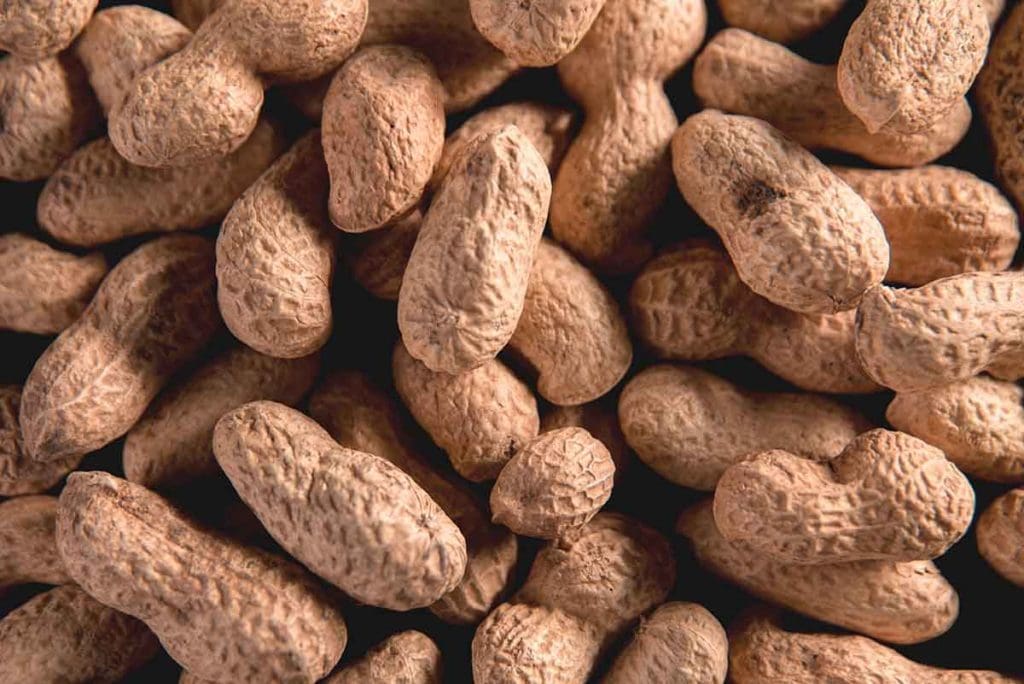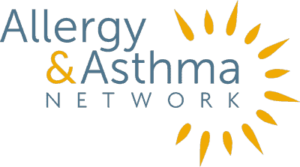Peanut Allergy Treatment
- Home
- |
- Health A to Z –...
- |
- Immunotherapy for Allergies
- |
- Peanut Allergy Treatment
Peanut allergy is one of the most common food allergies in children in the United States.A 2017 study reports that nearly 2.5% of U.S. childrenmay have a peanut allergy. In recent years, peanut allergy oral immunotherapy has emerged as a treatment option for children and adults alike.

What is peanut allergy immunotherapy?
Peanut allergy immunotherapy is a type of treatment that focuses on building tolerance to peanut. The treatment desensitizes the body to the allergen. The treatment starts with a tiny amount of peanut protein, and then gradually larger amounts, until a target dose is reached. Researchers have found that by building up peanut exposure slowly, it can desensitize the patient to high doses of peanut protein.
This type of treatment should only be done in a doctor’s office or medical setting where treatment can be provided in case an allergic reaction; do NOT attempt this on your own.
Peanut allergy immunotherapy is a treatment, not a cure, for peanut allergy. It is designed to reduce the frequency and severity of allergic reactions. This includes life-threatening anaphylaxis, in children ages 4-17 after accidental exposure to peanut.
考虑到花生过敏治疗?父母and patients need to know.
Stephanie Polk’s 10-year-old daughter Olivia has successfully avoided peanut since she was diagnosed with a peanut allergy at 2 years of age. As Olivia approaches middle school in Alexandria, Virginia, Stephanie worries the potential for exposure could increase in a new environment.
Has she considered exploring peanut allergy immunotherapy as a treatment option?
“It’s in the back of my mind,” she says. “I have some anxiety about exposing Olivia to her food allergen. We’ll wait to see how the school handles it and talk with teachers and the school nurse about the level of risk.
“The only way she would be exposed to peanut is if she were to eat someone else’s snack or there’s a school party with food. Olivia is pretty smart about being careful what she eats.”
What types of peanut allergy immunotherapy are available?
Oral immunotherapy (OIT)
OIT involves taking a small amount of peanut powder by one of two ways:
- Palforzia® (manufactured by Aimmune Therapeutics) is a capsule containing a measured dose of peanut powder that is administered under the supervision of a board-certified allergist. At this time it’s only for children between the ages of 4 to 17. Patients are given gradually increasing amounts of the powder until a tolerance level is reached; then the patient stays on that dose indefinitely.
Palforzia® is the first peanut allergy treatment approved by the U.S. Food and Drug Administration (FDA).
- An allergist who specializes in peanut allergy desensitization carefully prepares and administers a non-pharmaceutical grade peanut product using specific protocols. While these commercial products are not FDA-approved as a food allergy treatment, they have shown proven benefits for thousands of patients.
In addition to OIT, other products and methods of peanut allergy immunotherapy are being studied but are not available as a treatment or approved by FDA.
Sublingual immunotherapy (SLIT)
SLIT is another form of peanut allergy treatment. SLIT involves placing drops of a peanut protein extract under the tongue for 2 minutes before swallowing. A 2019 study showed promise in children ages 1 to 11, but more research is needed to prove it is safe and effective.
Biologic medications
Biologic medications such as omalizumab and etokimab are also being studied as potential peanut allergy treatments.
Allergy & Asthma Network continues to be in communication with FDA to reinforce the importance of treatment options for those living with peanut allergy.
Epicutaneous immunotherapy (EPIT)
Viaskin™花生(由伏特分贝制造技术), also called the “peanut patch,” is another type of peanut allergy treatment. Epicutaneous immunotherapy involves attaching an adhesive patch to the skin that contains a tiny dose of peanut protein. Similar to OIT, EPIT works by desensitizing patients to peanut and increasing tolerance. The patches contain very small quantities of peanut allergen – approximately 1/1000 of a peanut on it. Because the dose of allergen on each patch is so small, this approach is often well tolerated by patients.
Many are able to increase the threshold of peanut exposure that’s needed to trigger an allergic reaction. This means increased protection from an accidental exposure. This is likely because the dose in the peanut patch is very low and the dose does not change over time.
The peanut patch is a treatment that will require close supervision by a physician.
As of October 2020, it is still in clinical trials. DBV Technologies must submit to FDA new data that supports the patch’s effectiveness.

How does peanut allergy oral immunotherapy work?
Peanut allergy patients are given a capsule with peanut powder that can be mixed into food. When taking it, patients consume a controlled dose of peanut protein. The dose is gradually increased over time. Eventually a level of peanut tolerance is reached. So, if there’s an accidental exposure, it won’t trigger a severe allergic reaction.
This is not a peanut allergy cure. Patients must continue to avoid peanut products. They may need to continue undergoing OIT even after a tolerance level is reached.
The treatment is not for every peanut allergy patient, however. It’s important for patients and families to work together with a doctor to determine if Palforzia is an appropriate treatment.
How is Palforzia OIT prescribed?
Palforzia is available only through a Risk Evaluation and Mitigation Strategy (REMS). Requirements of the REMS include:
- The prescribing physician and patient must be enrolled in the REMS before starting treatment.
- The initial dose escalation and the first dose of each up-dosing level must be administered in a certified healthcare setting.Epinephrinemust always be immediately available to patients
- Pharmacies/distributors must be certified with the REMS . They may only dispense PALFORZIA only to certified healthcare settings or to patients who are enrolled in the REMS.
病人和家人Aimmune将提供资源ilies who, upon consultation with their physician, wish to seek treatment with Palforzia. These resources will include educational materials, a dedicated call center, co-pay program for eligible patients, and a Patient Assistance Program to provide Palforzia at no cost to eligible patients.
Can Palforzia OIT be taken at home?
This is not a home treatment. It should only be done under the care of a qualified allergy specialist and at a medical facility. Epinephrine, the first-line treatment for a severe allergic reaction, must by readily available.
Important: OIT should only be done under a doctor’s supervision; do NOT try OIT on your own.

How do I determine if peanut allergy immunotherapy is right for me or my child?
Allergists work with you to make sure OIT is a shared decision that is evidence-based, not fear-based.
Several factors can play a role in the decision:
- How have you or your child fared with strict avoidance of peanut?
- What is the risk of exposure?
- How severe are the allergic reactions to peanut?
What age should children undergo peanut oral immunotherapy (OIT)?
Palforzia is currently prescribed for children ages 4-17. What about children ages 1-3? It’s best to consult with a board-certified allergist who specializes in OIT.
The newIMPACT studysuggests OIT could safely desensitize peanut-allergic children ages 1-3. It could also help some peanut-allergic children become non-allergic to peanuts. The National Institute of Allergy and Infectious Diseases (NIAID) funded the study.
The study involved 146 peanut-allergic children. They received either 2,000 milligrams of peanut protein per day or a placebo. After 2.5 years, the researchers found 71% of those who received OIT had become desensitized to peanuts. After three years, 20.8% of those who received peanut protein were in remission of peanut allergy.
The research suggests that if peanut OIT is started at ages 1-3, there’s a chance of remission in some children. Doctors caution that more longer-term research needs to be done. Peanut OIT should not be considered a cure.
Important: do not try peanut OIT with a peanut-allergic child at home. There is a risk of a severe allergic reaction. Peanut OIT should only be done under the supervision of a doctor who specializes in the treatment.
How do I find current and accurate information about peanut allergy immunotherapy treatment options?
When considering OIT, it’s important to make sure you’re accessing trustworthy sources of information, says Douglas Jones, MD, a board-certified allergist and immunologist and food allergy specialist from the Tanner Clinic in Layton, Utah.
“With food allergy in general, there is so much information out there, and probably just as much misinformation,” Dr. Jones says. “Then you add food allergy treatment options such as immunotherapy on top of that, and sometimes you may think: Where do I go? How do I even make decisions about this?
“Ask yourself: Are my sources of information credible and trustworthy? What online resources am I using and what websites am I going to? What social media outlets do I visit and are they trustworthy? Getting good solid information is the first step.”
OIT should be done by allergists with expertise in food allergy and with experience in managing patients through every stage of immunotherapy. “Be sure to ask your allergist about their experience and training with OIT and what steps are taken to maximize safety,” Dr. Jones adds.
How do I evaluate the pros and cons of peanut allergy immunotherapy?
Many people with a peanut allergy don’t necessarily want to eat their allergen; they simply want protection against accidental exposure.
Talk with your allergist about the pros and cons of peanut allergy immunotherapy and determine whether the benefits outweigh the risks, including any potential side effects. Discuss the differences in undergoing OIT with an office-prepared product or Palforzia.
For some patients, avoidance of peanut may be most appropriate and preferred. Just keep two epinephrine auto-injectors close by in case of an accidental exposure and have an anaphylaxis emergency plan in place.
For others, OIT may be recommended if accidental exposures to peanut result in severe allergic reactions of if they want to consume peanuts regularly as part of their diet.
“What are your goals with immunotherapy? Why do you want to pursue this? When you focus in on that why, all the processes, protocols and procedures become clear to you and your decisions start to fall into place,” Dr. Jones says.
If you’re uncertain even after consulting with an allergist, ask to connect with a patient or family who recently underwent peanut allergy immunotherapy. Another perspective may help with your decision-making.
For Allergists
Douglas Jones, MD, is actively involved in providing hands-on training to allergists on all available food allergy treatment options so they can safely and efficiently add oral immunotherapy to their practices.
他的团队在全球Food Therapy conducts live and online training for allergists. Learn more atwww.gft4you.org.
Additional Resources

Get a Free Copy of Our"Understanding Allergies"Guide ➤
See Related Pages
Reviewed by:
Douglas Jones, MD, FACAAI,is a board-certified allergist and immunologist with the Tanner Clinic in Layton, Utah. He founded Rocky Mountain Allergy, a treatment center known for its food allergy program involving oral immunotherapy.


